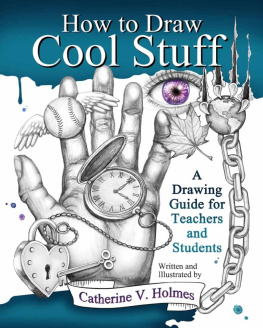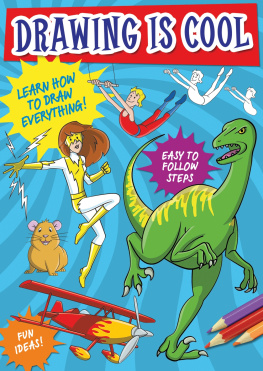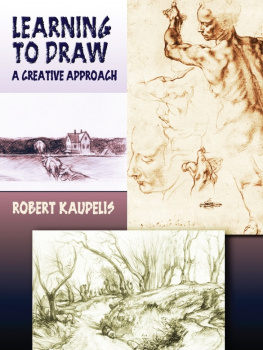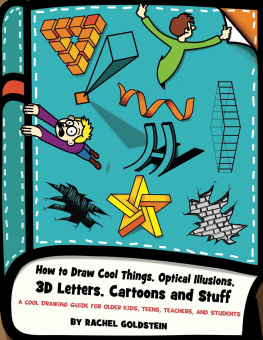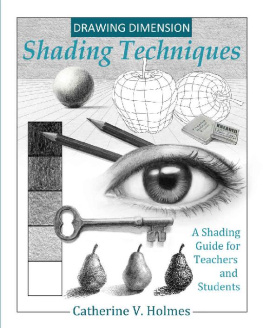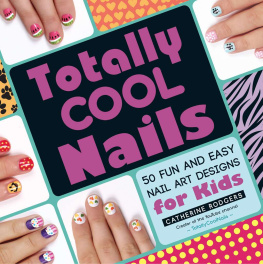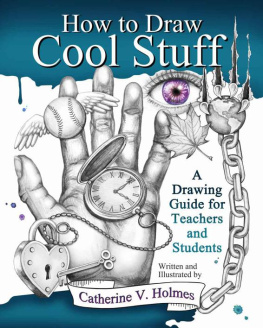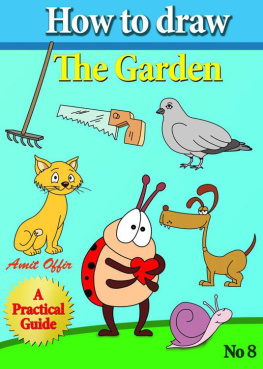Catherine Holmes - How to Draw Cool Stuff: A Drawing Guide for Teachers and Students
Here you can read online Catherine Holmes - How to Draw Cool Stuff: A Drawing Guide for Teachers and Students full text of the book (entire story) in english for free. Download pdf and epub, get meaning, cover and reviews about this ebook. year: 2017, publisher: Library Tales Publishing, genre: Romance novel. Description of the work, (preface) as well as reviews are available. Best literature library LitArk.com created for fans of good reading and offers a wide selection of genres:
Romance novel
Science fiction
Adventure
Detective
Science
History
Home and family
Prose
Art
Politics
Computer
Non-fiction
Religion
Business
Children
Humor
Choose a favorite category and find really read worthwhile books. Enjoy immersion in the world of imagination, feel the emotions of the characters or learn something new for yourself, make an fascinating discovery.
- Book:How to Draw Cool Stuff: A Drawing Guide for Teachers and Students
- Author:
- Publisher:Library Tales Publishing
- Genre:
- Year:2017
- Rating:4 / 5
- Favourites:Add to favourites
- Your mark:
- 80
- 1
- 2
- 3
- 4
- 5
How to Draw Cool Stuff: A Drawing Guide for Teachers and Students: summary, description and annotation
We offer to read an annotation, description, summary or preface (depends on what the author of the book "How to Draw Cool Stuff: A Drawing Guide for Teachers and Students" wrote himself). If you haven't found the necessary information about the book — write in the comments, we will try to find it.
Catherine Holmes: author's other books
Who wrote How to Draw Cool Stuff: A Drawing Guide for Teachers and Students? Find out the surname, the name of the author of the book and a list of all author's works by series.
How to Draw Cool Stuff: A Drawing Guide for Teachers and Students — read online for free the complete book (whole text) full work
Below is the text of the book, divided by pages. System saving the place of the last page read, allows you to conveniently read the book "How to Draw Cool Stuff: A Drawing Guide for Teachers and Students" online for free, without having to search again every time where you left off. Put a bookmark, and you can go to the page where you finished reading at any time.
Font size:
Interval:
Bookmark:

Published by:
Library Tales Publishing, Inc. www.LibraryTalesPublishing.com www.Facebook.com/LibraryTalesPublishing
Copyright 2013 by Catherine V. Holmes Published by Library Tales Publishing, Inc., New York, New York


INTRODUCTION
This book evolved out of necessity. After exploring art catalogs and libraries and wading through the how to draw section of book stores, I found a few good resources but none that had all the qualities I was looking for in a drawing book. Some ideas were too basic and often insulting to my older, more artistic students. Other material seemed to serve as a showcase for beautiful artwork but lacked any concrete instruction.
As a travelling art teacher with a limited budget and limited preparation time, I need a single resource that is easy to transport and can be used to teach all levels of students from middle school to high school and beyond. This book was created to fill that need and I want to share it with teachers and artists in similar situations. These projects will allow you to bring interesting and informative lessons that offer clear objectives and foster achievement without the need for expensive/multi-dimensional supplies: a regular pencil and eraser is all that is needed (sometimes a ruler or fine pen). Fancy art pencils, costly paper or kneaded erasers are not required for success. All pages have been student tested and approved.
The Book Details: Inside you will find specific exercises that offer step-by-step guidelines for drawing a variety of subjects.
Each lesson starts with an easy-to-draw shape that will become the basic structure of the drawing. From there, each step adds elements to that structure, allowing the artist to build on their creation and make a more detailed image. Each art project comes with a chart including information that the artist should be able to Know (facts, basic skills), Understand (big ideas, concepts, essential questions), and therefore be able to do (final assessment, performance, measurements of objectives) by the end of the lesson. This additional information gives these pages more power than just art for arts sake - not that you need it - because art is important enough on its own! Artists are learning about themselves as expressive souls through the process of creating beautiful and interesting work. The best part is, this is stuff that artists want to draw. Information for Teachers using this Book: Teachers can feel confident that they are using instructional time in ways that make a difference for their students when using this guide.
Each lesson includes easy-to-follow instruction where the whole process is viewed through a sequence of detailed illustrations that can be linked to historical connections, your curriculum learning standards or adapted into an arts integration lesson. You decide how intense to make each project. The projects can be differentiated to respond to students diverse learning styles through a mixture of visuals and text.
For the best results, here are a few tips: Lessons are provided on mostly one-sided sheets for easy reproduction. Copy them on the photo setting of your schools copy machine if possible. The shaded areas will retain their best value.
Post the Know, Understand, Do sheet provided on the board so students will clearly see the lesson objectives. Encourage your students not to skip any of the steps. Teachers may find that many students want instant gratification and often try to skip to the last step without following the process. There are a few art students who have a talent for drawing or have prior experience with drawing complex forms and do not need the steps, however, most do need to follow the sequence in order to achieve their best result. For greater success, they must follow the steps! By doing so, students are training their brains to see shapes within an object instead of the object as a whole. This will simplify the drawing process.
Tell students to draw lightly. Once they have a basic outline and a few details, then students can make their lines darker and more permanent. Getting heavy-handed artists to draw lightly can be a constant battle but the struggle is worth it once they see the benefits. Erasing becomes easier and fewer papers are crumbled up and thrown away. Every student will find a different level of success with these drawing guides. Encourage students to make their work different from the exercises in the book by adding extras and more details.
This makes each work of art unique and personal. These simple steps can be adapted to any level - the student can put as much or as little effort into their work as their comfort level allows. NOTE: As a great art teacher, always push your students for more - going beyond the comfort zone is how we learn!
The techniques and processes presented in this book are well within the reach of what your student can do. On occasion, some students may get frustrated and want to give up. Sometimes a student will declare defeat before even attempting the work. That is unacceptable! Remind them that creating art is a process.
In cases like this, encourage your student to try just the first step. They will see that first step is quite easy and may be encouraged to try the next step, etc. If all of attempts at drawing seem to be preventing your student from achieving success, you may want to allow that student to trace. The drawings on these pages are presented on a smaller scale in order to discourage tracing, however, it is better to allow tracing as opposed to your student doing nothing at all. Modifications for assignments can include tracing if need be, just have the student add their own unique twist by shading or adding extras that are not seen in the examples provided. Tracing without even trying - NOT OK! This book is great for substitutes.
Copy a bunch of these lessons, put them in your sub folder and take your sick day without worry. With enough practice, eventually students wont need a how-to book. A shift in the brain will occur and your students will be able to mentally break down the simpler image behind the complex one without assistance. That is when they will become Super Smart Artists! Information for Artists using this Book: Following these exercises is a great way to practice your craft and start seeing things in terms of simple shapes within a complex object. Professional art pencils and paper can offer a variety of results, however, the techniques discussed in this book can be successful by using everyday supplies.
This book is intuitive but you may come across a few challenging steps.
Follow the tips below for best results. Try blocking out the information you dont need. When you begin drawing one of the artworks in this book, cover all of the steps shown with a blank piece of paper except for the first one. Draw just the first step that is exposed. After that step is finished, uncover the next step and work on it. By blocking out the steps you are not working on, the artwork becomes less challenging to attempt.
Continue uncovering each step one by one and adding to your artwork until it is complete. It is a simple tactic but it works by getting you to focus on just one action at a time. Patience is necessary. Dont rush, take your time and practice patience. Dont crumble up your paper in frustration every time you make a mistake. Look at your artwork and figure out the lines that work and the lines that dont.
Font size:
Interval:
Bookmark:
Similar books «How to Draw Cool Stuff: A Drawing Guide for Teachers and Students»
Look at similar books to How to Draw Cool Stuff: A Drawing Guide for Teachers and Students. We have selected literature similar in name and meaning in the hope of providing readers with more options to find new, interesting, not yet read works.
Discussion, reviews of the book How to Draw Cool Stuff: A Drawing Guide for Teachers and Students and just readers' own opinions. Leave your comments, write what you think about the work, its meaning or the main characters. Specify what exactly you liked and what you didn't like, and why you think so.

